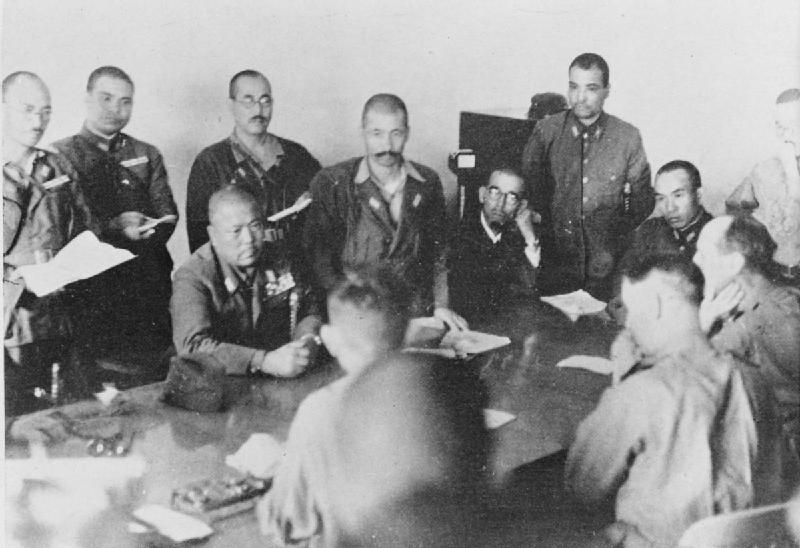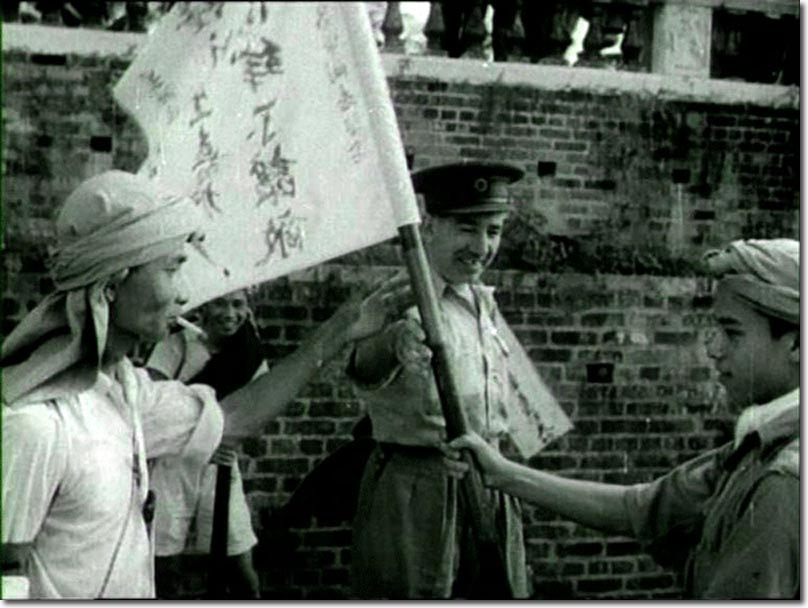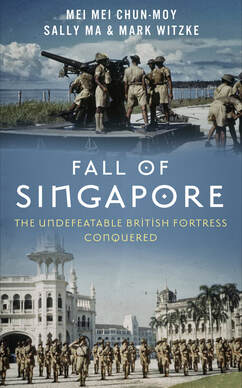- Home
- Stories
-
Internship
- Summer 2024 Internship
- Summer 2023 Internship
- Fall 2022 Internship
- Summer 2022 Internship
- Summer 2021 Internship
- Fall 2020- Spring 2021 Internship
- Summer 2020 Internship
- Fall 2019 Internship
- Summer 2019 Internship >
- School Year 2018-2019 Internship
- Summer 2018 Internship >
- Fall 2017 Internship
- Summer 2017 Internship >
- Books
- Archives
-
Resource Page
-
Supplementary Research Guides
>
- Unit 731 - Guide >
-
Philippines' Resistance - Guide
>
- Philippines World War II Timeline
- The Japanese Invasion & Conquest of the Philippines
- Bataan Death March
- Formation of Underground Philippines Resistance
- Supplies of the Guerrilla Fighters
- The Hukbalahap
- Hunter's ROTC
- Marking's Guerrillas
- United States Army Forces in the Philippines of Northern Luzon (USAFIP-NL)
- The Aetas
- Chinese and Filipino-Chinese Nationalist Guerrilla Units
- The Female Faces of the Philippine Guerrillas
- Rising Sun Flag - Guide >
- Pinay Guerrilleras - Guide >
- Fall of Singapore - Guide >
- Three Years and Eight Months - Guide >
- Siamese Sovereignty - Guide >
- The Khabarovsk War Crimes Trial - Guide >
- Unit 731 Cover-up : The Operation Paperclip of the East - Guide >
- Marutas of Unit 731 - Guide >
- Prince Konoe Memoir - Guide >
- Competing Empires in Burma - Guide >
- Battle of Shanghai - Guide >
- Ishi Shiro - Guide >
- Taiwan The Israel of the East - Guide >
- Seeking Justice for Biological Warfare Victims of Unit 731 - Guide >
- Rice and Revolution - Guide >
- Clash of Empires - Guide >
-
Hunger for Power and Self-SufficiencyI - Guide
>
- The Influence of War Rations on Post-War Culinary Transformations
- How World War II Complicated Food Scarcity and Invention
- American Military Innovations
- Government-Sponsored Food Inventions in Europe during World War II
- Feeding the Army: The Adaptation of Japanese Military Cuisine and Its Impact on the Philippines
- Mixed Dishes: Culinary Innovations Driven by Necessity and Food Scarcity
-
Denial A Quick Look of History of Comfort Women and Present Days’ Complication - Guide
>
- The Comfort Women System and the Fight for Recognition
- The Role of Activism and International Pressure
- The Controversy over Japanese History Textbooks
- The Sonyŏsang Statue and the Symbolism of Public Memorials
- Activism and Support from Japanese Citizens
- The Future of Comfort Women Memorials and Education
- Echoes of Empire: The Power of Japanese Propaganda - Guide >
- Lesson Plans >
-
Supplementary Research Guides
>
When did Japan declare war to the UK?
Within hours after bombing Pearl Harbor, the Japanese forces bombed Singapore. Emperor Hirohito declared war on both Great Britain and the United States following the surprise attacks. On December 8, 1941, Japanese fighter planes began bombing Singapore’s two air bases, Seletar and Tengah, along with the coast near the harbor. On the same day, the Imperial Japanese Army began their march through the treacherous Malayan jungle with their military troops to launch a sneak attack by land. The only thing that stood between Singapore and the surrounding Japanese troops was a group of Allied forces spread out too thin across the island.
The British Plan to Defend Singapore
Operation Matador was the British plan to destroy the invasion force before or during its landing. It was a strategy which hinged on the expectation that the Japanese would attack from the north. There was also an expectation that they would be able to foresee where the Japanese were going to land and be there before they could strike. However, Japanese troops had never proceeded as the plan expected, in which they chose a 10 mile stretch along the coastline as landing site in Malaya, and Operation Matador was never put into action.
The Conquest of the Malay
British Lieutenant General Percival and the other commanders stationed in Malaya could not come to a consensus on their next strategy. At the Battle of Jitra in Malaya, the Japanese soldiers were ordered not to take prisoners as it would slow their advance on Singapore. As a result, they indiscriminately captured and killed any Allied soldiers on sight, as well as the civilians, whether they pleaded to surrender or not. By December 17th, the Japanese seized Penang, on December 22nd, Taiping, and on January 7th, they went through the Slim River, eventually capturing Kuala Lumpar by January 11th. The Japanese finally crossed the Muar River on January 15th. After crossing the Muar River, they set their sights on Johor, the entry place of Singapore.
The Fall of Fortress Singapore
|
British Surrender on February 15th, 1942
|
The Allied troops in Singapore were unprepared for the speed and deception accomplished by Japan’s initial attack. The majority of the British soldiers there had never seen combat before and were unprepared for the overwhelming intensity of the Japanese style of fighting. The final battle began on February 11th. As General Yamashita chose a better military tactic than Lieutenant General Percival, the Japanese Imperial Army officially conquered Singapore and the surrounding Malaya countries on February 15th, 1942. When the British surrendered, Japan renamed Singapore to Syonan-to, meaning "Light of the South."
|
The Dalforce
|
Dalforce in WWII (image by britishempire.co)
|
One group of civilians in Singapore organized 4,000 volunteer guerrilla fighters to counter the Japanese invasion. This volunteer guerrilla force was referred to by British command as Dalforce, after its chief instructor and commanding officer, John Dalley. Formed on December 25th, 1941, the group fought ferociously, despite being ill-equipped for battle. Their ferocity earned them the nickname Dalley's Desperadoes, and they aided the Allied front by patrolling mangrove swamps, where enemy landings were often made.
|
Related Book
Fall of Singapore:
|
|
Pacific Atrocities Education
730 Commercial Street San Francisco, CA 94108 415-988-9889 |
Copyright © 2021 Pacific Atrocities Education.
We are a registered 501 (c)(3) charity. |
- Home
- Stories
-
Internship
- Summer 2024 Internship
- Summer 2023 Internship
- Fall 2022 Internship
- Summer 2022 Internship
- Summer 2021 Internship
- Fall 2020- Spring 2021 Internship
- Summer 2020 Internship
- Fall 2019 Internship
- Summer 2019 Internship >
- School Year 2018-2019 Internship
- Summer 2018 Internship >
- Fall 2017 Internship
- Summer 2017 Internship >
- Books
- Archives
-
Resource Page
-
Supplementary Research Guides
>
- Unit 731 - Guide >
-
Philippines' Resistance - Guide
>
- Philippines World War II Timeline
- The Japanese Invasion & Conquest of the Philippines
- Bataan Death March
- Formation of Underground Philippines Resistance
- Supplies of the Guerrilla Fighters
- The Hukbalahap
- Hunter's ROTC
- Marking's Guerrillas
- United States Army Forces in the Philippines of Northern Luzon (USAFIP-NL)
- The Aetas
- Chinese and Filipino-Chinese Nationalist Guerrilla Units
- The Female Faces of the Philippine Guerrillas
- Rising Sun Flag - Guide >
- Pinay Guerrilleras - Guide >
- Fall of Singapore - Guide >
- Three Years and Eight Months - Guide >
- Siamese Sovereignty - Guide >
- The Khabarovsk War Crimes Trial - Guide >
- Unit 731 Cover-up : The Operation Paperclip of the East - Guide >
- Marutas of Unit 731 - Guide >
- Prince Konoe Memoir - Guide >
- Competing Empires in Burma - Guide >
- Battle of Shanghai - Guide >
- Ishi Shiro - Guide >
- Taiwan The Israel of the East - Guide >
- Seeking Justice for Biological Warfare Victims of Unit 731 - Guide >
- Rice and Revolution - Guide >
- Clash of Empires - Guide >
-
Hunger for Power and Self-SufficiencyI - Guide
>
- The Influence of War Rations on Post-War Culinary Transformations
- How World War II Complicated Food Scarcity and Invention
- American Military Innovations
- Government-Sponsored Food Inventions in Europe during World War II
- Feeding the Army: The Adaptation of Japanese Military Cuisine and Its Impact on the Philippines
- Mixed Dishes: Culinary Innovations Driven by Necessity and Food Scarcity
-
Denial A Quick Look of History of Comfort Women and Present Days’ Complication - Guide
>
- The Comfort Women System and the Fight for Recognition
- The Role of Activism and International Pressure
- The Controversy over Japanese History Textbooks
- The Sonyŏsang Statue and the Symbolism of Public Memorials
- Activism and Support from Japanese Citizens
- The Future of Comfort Women Memorials and Education
- Echoes of Empire: The Power of Japanese Propaganda - Guide >
- Lesson Plans >
-
Supplementary Research Guides
>


